Our own Marion Bowman took part in a podcast discussion with Professor Maureen Carroll, Jessica Hughes and Emma-Jayne Graham, “‘Mater Matuta and her ‘Sisters’: Exploring Fertility Cults and Associated Votives in Early Roman Religion”. This was recorded during last week’s London event of the Baron Thyssen Centre for the Study of Ancient Material Religion at The Open University http://www.openmaterialreligion.org
Sarah Thomas in the News
One of our PhD students, Sarah Thomas, has been all over the news media this week, following the New York Times story revealing the existence of secret Vatican rules regarding priests who break their celibacy and father children, this Monday.
Sarah is working on the children of Roman Catholic priests, focusing on their transition from isolated individuals to group members via the medium of social media, with semi-structured interviews providing the main data source. Initial data analysis suggests that the process of priests’ children forming a critical mass and challenging their ‘silencing’ through media outlets not only offers new knowledge about themselves and issues of secrecy, power and authority in the Roman Catholic Church, but taps into and advances research on other contemporary challenging of institutional authority from groups including the #MeToo campaign and victims of clerical sexual abuse. So to see her appearing in the media is apropos indeed!
First, the CBS News video and article that was published yesterday can be found here.
She also took part in a live radio interview yesterday on BBC World Service, at about 27 minutes in.
And while it pains me to give them publicity, here’s Fox News using her work too.
Student Day 2018 | Graham Harvey, Finding Religion Where You Are
Graham Harvey talks about “Finding Religion Where You Are” at the Open University’s Religious Studies Student Day, September 18th 2018. This talk is a taster of material you can explore in depth in A227, “Exploring Religion”
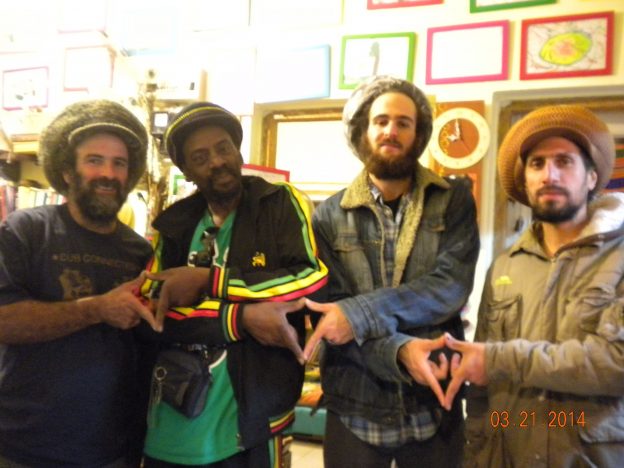
Rastafari in Motion | Jewish Rastas?
By Hilde Capparella, PhD student in Religious Studies
My doctoral research focuses on diasporic and transnational contexts of Rastafari. I am interested in de-essentialising Rastafari, and over the next year or so I will be conducting fieldwork in Rome and London with different Rasta communities and groups. I see my approach as one that focuses on religion in motion, and it is an approach I began to develop when I decided to investigate Rastafari in Israel for my Master’s Thesis. In March 2014, I conducted two weeks of fieldwork in Israel, where I was hosted by a Rastafari family living in Ashdod.
Upon my arrival, I was surprised to see that their house was completely covered with Rastafari symbols and colours (see picture below). My senses were also submerged in the sounds of Reggae and Dub music playing in the background 24 hours a day. It is important to note that Rastafarianism appeared in Israel through books, radio, and television, promoting reggae music and culture. During my short stay, what amazed me was to hear how the Rastafari language (the Dread talk) was used and mixed with Hebrew in everyday life, creating a new form of language.
Through my fieldwork, the main question I wanted to answer was why they embraced Rastafari so passionately. Despite identifying as Jews, they felt Rastafari to be more flexible than Judaism. In addition, because Rastafari relies on the Levitical code of conduct, for them it is easier to embrace Rastafari practices and symbolism, as it is already, in a certain way, part of their culture.
The most significant and emotional event during my stay was my participation in the Sabbath. During this ritual, the whole family wore items with Rastafari symbols and colours. Whilst the parents were wearing the Tam (Rasta hat), their son was wearing a Kippa (Jewish hat) with Rastafari colours. During the prayer, they explained that because they embrace Rastafari they replace the Sabbath wine with grape juice, as Rastafarians cannot drink alcohol. They emphasised that, for them, Sabbath is a time to pray and stay with family and friends more than a time to go to the temple. In fact, after the Sabbath celebration, their friends came to visit them.
The picture at the top of the post was taken during that day. Just before to take the picture they all naturally united their fingers together doing the Rastafari gesture. This sign was first adopted by King Selassie, and symbolises Solomon’s Seal (or Star of David) to emphasise the King’s geneological link to King Solomon. King Selassie was the king of the Falasha, the Jewish of Ethiopia, despite growing up as an Orthodox Christian. Therefore, the symbol was adopted by Rastafari worldwide is used to signify their bond with Selassie. However, for Christian (generally Orthodox) or Jewish Rastafari, it symbolises also the link with the Selassie dynasty from David, to Jesus, to Selassie.
Through this short piece of fieldwork, I discovered a new blend of Rastafarianism and Judaism. As my doctoral research proceeds, I expect to expand on these findings.
Photos by the author.
Student Day 2018 | Regina Jonas
Stefanie Sinclair talks about Regina Jonas, the first female Rabbi, at the Open University’s Religious Studies Student Day, September 18th 2018. This talk is a taster of material you can explore in depth in A332, “Why is Religion Controversial?”
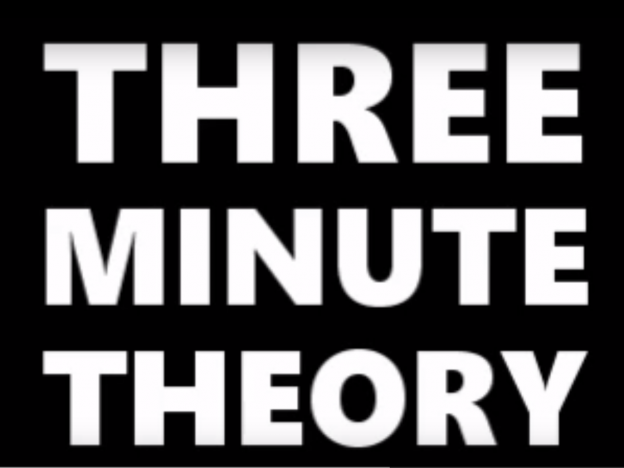
3 Minute Theory | Conjectures and Refutations, with Suzanne Newcombe
Another 3 Minute Theory! Suzanne Newcombe discusses Karl Popper’s “Conjectures and Refutations”, and explains what it has to do with functional and substantive definitions of religion.
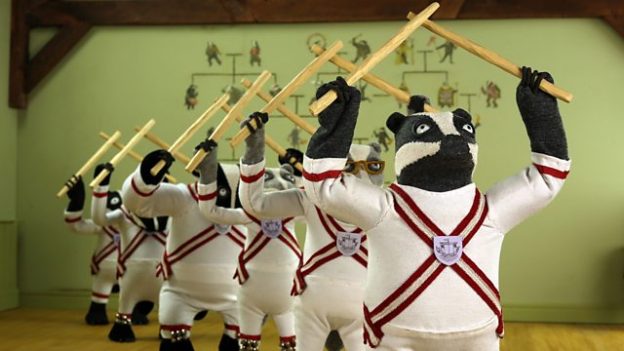
Morris Dance as Ritual Dance, or, English Folk Dance and The Doctrine of Survivals
By Chloe Middleton-Metcalfe, University of Roehampton
The BBC’s featured online animation for December 2018, Quarantine, is described as: ‘A post-Brexit pagan dance fantasy about a troupe of Morris-dancing badgers’ (BBC online). Quarantine builds upon a culturally pervasive idea that has been widely discredited by researchers – that folk dance has its origins in pre-Christian ritual. However documentary research has failed to provided an easily digestible alternative, tentatively suggesting some connection with the end of the Muslim-Christian wars in the Iberian Peninsula in the 15th century (Forrest 1999). With a raft of publications dating back to 1912 espousing the ritual theory, it is easy for interested individuals to be led down the pre-Christian garden path. Indeed, the ancient origins explanation probably does provide a more palatable alternative for many liberally inclined folk dance supporters than much of the historical documentation. For example, the practice of applying black face paint for ‘border’ morris was linked to anonymity and ritual, but research points to stronger links with stage minstrelsy (Metcalfe 2013). But where did the idea of ancient ritual come from in the first place?
In 1871 anthropologist Edward Burnett Tylor (1832-1917) published Primitive Culture, in which he laid out his theory of cultural survivals. Tylor posited that folklore or superstitions were ‘survivals’ of an earlier culture which had evolved leaving traces of itself behind in customs which could be seen as being cultural fossils (Hodgen 1931, Tremlett et.al. 2017). Tylor’s ideas were influenced by cultural evolutionism and drew parallels between the folklore of western civilised Europe and the culture of contemporary so-called ‘primitive’ societies, which were both inaccurate and racist (Kuper 1991, Bennett 1994). Tylor’s work was very influential as his ideas shaped James Frazer’s (1851-1941) publication The Golden Bough: A Study in Comparative Religion (1890). Frazer pieced together diverse accounts of cultural practices from around the world to argue for a universal primeval religion, of which contemporary folklore practices were the surviving fragments (Hutton 2001: 112-131). The Doctrine of Survivals became the standard explanation for most folklore, including dance (Cawte 1993).
Frazer’s theories were picked up and promoted by Cecil Sharp (1859-1924), founder of the English Folk Dance Society. As dance historian Buckland has noted (1982), between the first and second editions of the The Morris Book Sharp changed his theoretical positioning on the origins of the dance form from one which postulated the arrival of the dance in England during the reign of Edward III (1312-1377), to a theory which considered morris dancing to be ‘one of the seasonal pagan observances prevalent amongst primitive communities’ (1912: 11). Sharp had gone Frazarian. Even country dancing was linked back to ancient ritual practice with maypoles providing an imaginative link between the older form of the dance and its modern manifestations (Sharp and Oppé 1924: 6, Judge 1979 [2000]: 85).
Theories on the origins of dance more generally were also influenced by the Doctrine of Survivals. In 1895 Lilly Grove published Dancing an early history on the subject in which even the most secular forms of dance are characterised as having their roots in ‘a form of worship, or at least a form of magic’ (Grove 1895:7). Grove was perhaps unduly influenced by the Golden Bough as she later married James Frazer, but even without the family connection, many early twentieth century theories of dance were linked to the Doctrine of Survivals and an associated evolutionary-based approach to the study of culture (Buckland 2014). Influential dance historian Curt Sachs, whose ideas like Tylor’s and Frazer’s were to receive heavy criticism (Youngermann 1974), postulated that: ‘The dances of man are never mere pastimes, or artistic performances without significance; they are magic actions and in consequence constructed in such a manner as to achieve a magic purpose.’ (Sachs 1931: 30). Theories and definitions of dance emphasised the non-verbal and so dance was particularly vulnerable to discussion of animalistic instinct and primitive ritual. Indeed, popular dance histories often supplied a problematic evolutionary-based framework for the reader, who would pass through chapters of tribal and western folk dance to reach the acme of developed western theatrical dance culture – ballet (Grau 1993/4).
Whilst the contemporary dance world has successfully distanced itself from such ritualistic narratives by emphasising the role of the individual creative genius, the same cannot be said for English folk dancers. The Doctrine of Survivals and The Golden Bough continue to circulate under a number of guises (Buckland 2001/2). The 1973 cult film The Wicker Man, which drew upon The Golden Bough for inspiration did much to indirectly bring Frazer’s work to new audiences (Koven 2007, Trubshaw 2002, Scovell 2017). Arguably the most fruitful investigation of the link between morris and ritual dance would be in its current usages and understandings. Indeed, the link between folklore and non-Christian faith is a reality for some contemporary Pagans, for whom appreciation of, or engagement in, folk music and dance is a part of their religiosity (Chase 2006, Letcher 2014).
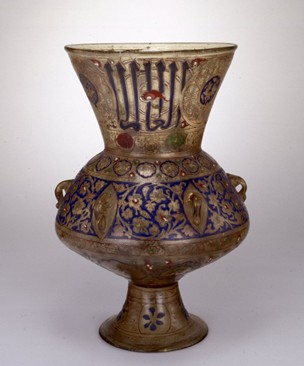
Graham Harvey, Hugh Beattie & Suzanne Newcombe are talking at the Understanding Religion Through Objects study day at the British Museum, Sat 29 Jan. They use Museum objects to explore the rituals and everyday lives of religious practitioners.
Talks focus on themes such as initiation, pilgrimage, sacrifice and worship, and Venetia Porter, curator of the Albukhary Foundation Gallery of the Islamic world, will also discuss the re-presenting of objects and art from the cultures of Islam.
Booking and full details at https://tinyurl.com/ybx33asa
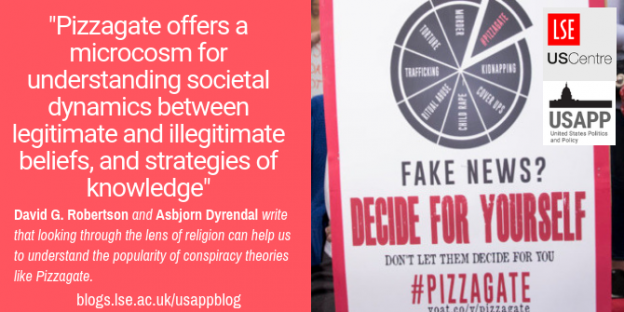
Why looking through the lens of religion can help us to understand the popularity of conspiracy theories like Pizzagate
David G. Robertson has a new piece out over at the LSE’s blog on United States Policy and Politics blog, discussing his work on the intersections of religion and conspiracy theories. Read the whole thing here.
Conspiracy theories rarely lead to violence; with the main exception being 2016’s Pizzagate which culminated in a gunman threatening a pizza restaurant which he believed was a front for a satanic paedophile ring. David G. Robertson and Asbjorn Dyrendal unpack some of the reasons why conspiracy theories such as Pizzagate can gain ground so rapidly, citing links to the “satanic panic” of the 1990s. They also point to links with wider apocalyptic narratives of right-wing conspiracist groups, narratives which are often also reflected in religion.
